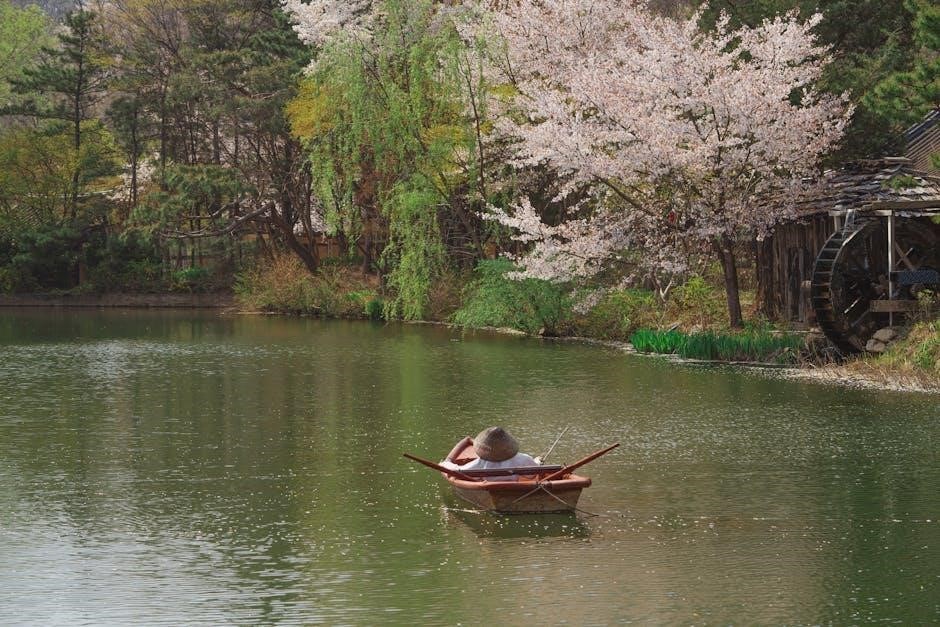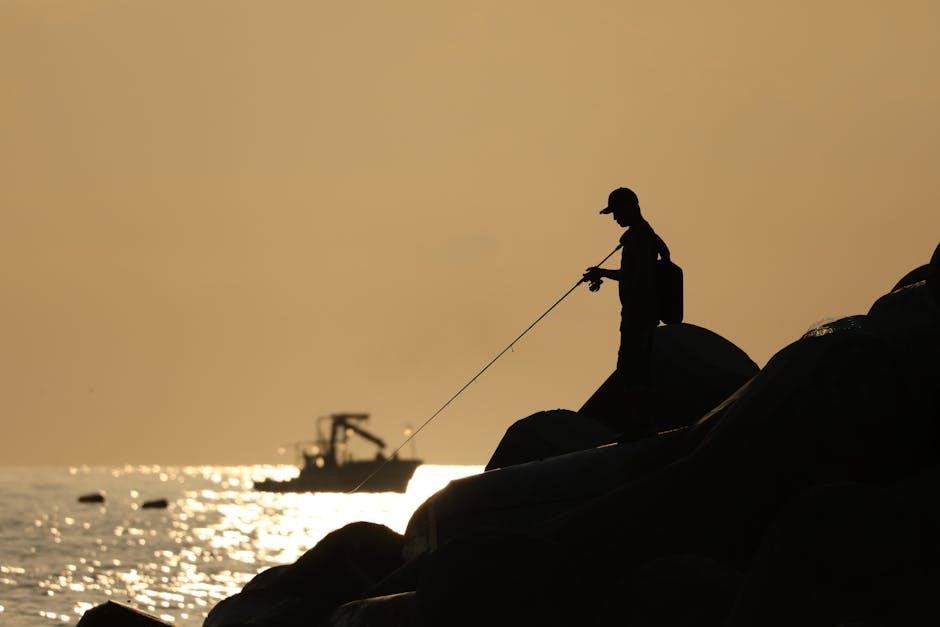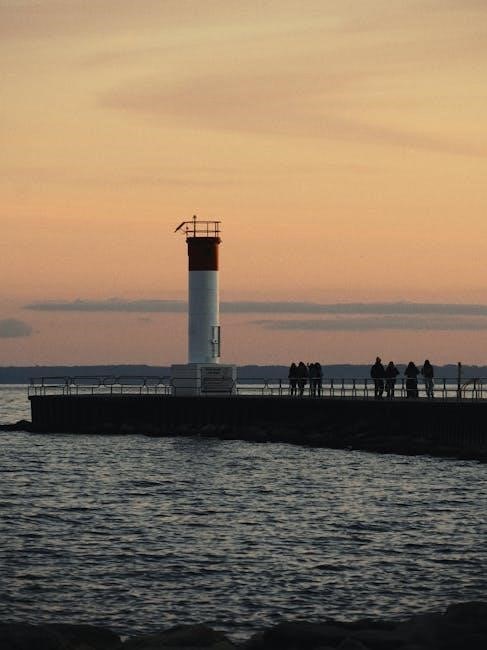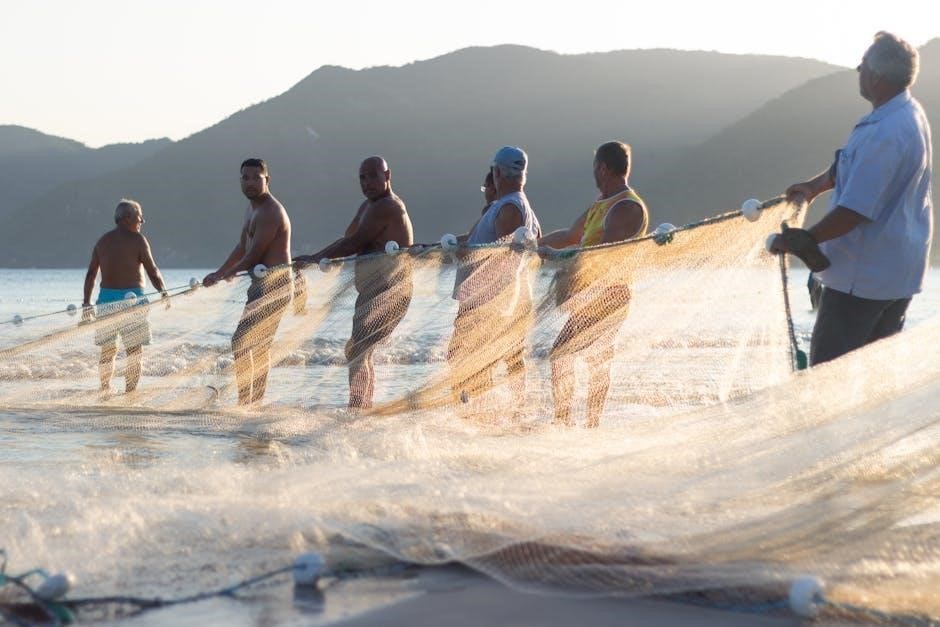Tipping fishing guides is customary to show appreciation for their expertise and effort. Typically, 15-20% of the trip cost or $50-$100 per day is recommended, depending on service quality and regional norms.
Why Tipping is Important in the Fishing Industry
Tipping fishing guides is a vital practice that reflects appreciation for their expertise, effort, and dedication to ensuring a successful and enjoyable experience on the water. Guides often work as independent contractors, relying heavily on tips to supplement their income. A significant portion of their earnings comes from gratuity, making it essential for clients to recognize the value they provide. Fishing trips require extensive preparation, including maintaining equipment, scouting locations, and ensuring safety, all of which are time-consuming and costly. By tipping, clients acknowledge the guide’s hard work and commitment to delivering a memorable adventure. Additionally, tipping incentivizes guides to go above and beyond, enhancing the overall quality of the experience. It also fosters a positive relationship between clients and guides, creating a win-win situation for both parties. Ultimately, tipping is not just a gesture of gratitude but a crucial part of the fishing industry’s culture and economy.

Understanding the Standard Tipping Rates
Standard tipping rates for fishing guides typically range from 10% to 20% of the total trip cost, reflecting the quality of service and regional norms. Tips may also be adjusted based on trip duration and guide performance.
Percentage-Based Tipping (15-20% of Trip Cost)
Percentage-based tipping is a common and fair approach for compensating fishing guides. Typically, anglers tip between 15-20% of the total trip cost, ensuring the gratuity reflects the quality of service and overall experience. This method is preferred because it scales with the trip’s expense, making it equitable for both short and extended fishing excursions. For example, a $500 full-day trip would warrant a $75 to $100 tip. This range accounts for the guide’s expertise, preparation time, and efforts to ensure a successful and enjoyable outing. Regional norms and the guide’s performance may influence the final percentage. If the guide exceeded expectations, tipping on the higher end of the spectrum is appropriate. Conversely, if the service was average, a lower percentage within the range may be considered. This approach ensures the tip aligns with the value received, fostering a positive experience for both the angler and the guide.
Flat Rate Tipping ($50-$100 Per Day)
Flat rate tipping offers a straightforward alternative to percentage-based gratuity, providing a clear guideline for anglers. Typically, $50 to $100 per day is recommended, depending on the duration and type of fishing trip. This method is particularly useful for shorter or half-day excursions, where calculating a percentage might result in a smaller tip. For instance, a half-day trip might warrant a $50 tip, while a full-day trip could range from $75 to $100. Factors such as the guide’s attentiveness, effort, and the overall success of the trip influence the final amount. Regional differences also play a role, with some areas expecting higher flat rates due to local norms. This approach ensures fairness and simplicity, allowing anglers to show appreciation without complex calculations. It’s important to consider the guide’s contributions, such as equipment preparation and expertise, when determining the appropriate flat rate tip.
Factors Influencing Tip Amount
The tip amount for fishing guides is influenced by the quality of service, trip duration, and regional tipping norms. A guide’s expertise, effort, and the overall experience also play a significant role in determining gratuity.
Quality of Service and Guide Performance
The quality of service and the guide’s performance significantly impact the tip amount. If the guide demonstrates exceptional expertise, works diligently to ensure a successful trip, and provides excellent customer service, a higher tip is warranted. Factors such as the guide’s attentiveness, willingness to share knowledge, and effort to adapt to your needs are key considerations. A guide who goes above and beyond to ensure a memorable experience deserves a more generous gratuity. Conversely, if the service is subpar, the tip may be adjusted accordingly. Ultimately, the tip reflects satisfaction with the guide’s professionalism and dedication to making the fishing trip enjoyable and productive.
Length and Type of Fishing Trip
The length and type of fishing trip play a crucial role in determining the appropriate tip for a guide. Full-day trips typically warrant higher gratuities compared to half-day excursions, as guides invest more time and effort. For multi-day charters or extended expeditions, the tip may be calculated differently, often reflecting the cumulative effort and resources provided. Additionally, the complexity of the trip, such as deep-sea fishing or specialized techniques, can influence the tip amount. Guides who organize overnight stays or provide additional amenities may also receive a larger gratuity. Ultimately, the tip should align with the duration, intensity, and unique demands of the fishing experience, ensuring that the guide is fairly compensated for their time and expertise. This approach helps maintain a positive relationship and encourages exceptional service on future trips.
Tipping customs for fishing guides vary significantly across different regions and countries. In the United States, for instance, 15-20% of the trip cost is commonly expected, with some areas like Alaska and Hawaii leaning toward the higher end of this range. In contrast, destinations in Central America or the Caribbean may have lower tipping expectations, often around 10-15%, reflecting local economic norms. Additionally, some regions may prefer cash tips over credit card gratuities, as it ensures the guide receives the full amount. Cultural practices also influence tipping habits; for example, in some European countries, rounding up the bill or leaving a smaller percentage is more customary. It’s essential to research local tipping etiquette before a fishing trip to ensure fairness and appreciation for the guide’s services. Understanding these regional differences helps anglers navigate gratuity expectations with confidence and respect for local traditions. To calculate the tip, use 15-20% of the total trip cost or opt for a flat rate of $50-$100 per day. Consider the number of guides or mates when determining the amount. Calculating your fishing guide tip based on the total trip cost is a straightforward method. Typically, 15-20% of the total cost is recommended, as it reflects the guide’s effort and service quality. For example, if your trip costs $500, a tip would range from $75 to $100. This percentage-based approach ensures that the tip aligns with the overall experience and expenses incurred during the trip. When using this method, consider the number of anglers and the length of the trip to adjust the percentage accordingly. For instance, a full-day trip with multiple anglers might warrant a slightly higher percentage due to the increased workload for the guide. Always round up to the nearest whole number for simplicity, ensuring the tip is fair and appreciated. This method is widely accepted across the fishing industry. When determining how much to tip a fishing guide, it’s essential to consider the number of guides or mates involved in your trip. For smaller boats or private charters, there may be one guide, while larger vessels often have multiple guides or mates assisting. In such cases, the total tip should be divided fairly among them. For example, if you plan to tip $100 for a full-day trip and there are two guides, each should receive $50. Similarly, if there are additional mates, the tip should be split proportionally based on their involvement. This ensures that everyone contributing to your experience is fairly compensated. The quality of service from each individual can also influence how much you allocate to each guide or mate. If one guide went above and beyond, you might consider giving them a slightly larger share. This approach ensures fairness and shows appreciation for their hard work and dedication. When finalizing the tip, consider the guide’s performance and your overall satisfaction. Ensure the amount reflects their effort and service quality. Present the tip respectfully, either directly or in an envelope. Presenting the tip to your fishing guide should be done respectfully and thoughtfully. Many anglers prefer to hand the tip directly to the guide, often in an envelope to ensure privacy. This gesture shows appreciation for their hard work and dedication. If you’re part of a group, consider pooling contributions to avoid confusion. Digital payment options are also becoming common, but cash remains the most traditional method. When presenting the tip, a simple “thank you” or acknowledgment of their effort can make the moment more meaningful. The goal is to ensure the guide feels valued for their expertise and the memorable experience they helped create. Whether the day was successful or challenging, the tip reflects your satisfaction and gratitude for their professionalism. Always aim to make the exchange casual and sincere, avoiding any awkwardness. This approach fosters a positive connection and leaves a lasting impression of your appreciation.Regional Differences in Tipping Norms

How to Calculate the Tip
Using the Total Trip Cost for Calculation
Considering the Number of Guides or Mates


Finalizing the Tip
Presenting the Tip Appropriately

No Responses